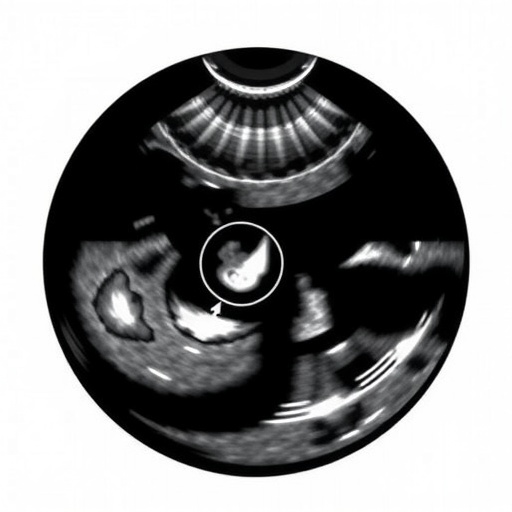Volumetric printing represents a monumental leap in additive manufacturing, an innovative technique for producing complex three-dimensional objects with unprecedented speed and surface quality. Traditional methods of 3D printing typically involve a step-by-step approach where each layer of material is applied one at a time. This iterative process is not only time-consuming, but can also lead to compromised quality of the final product. However, volumetric printing circumvents these limitations by eliminating the need for incremental layer-by-layer application. Instead, it uses advanced technologies to rapidly solidify materials within a spatial volume, creating fully formed 3D constructs in a fraction of the time.
At the heart of this technological development is the use of light energy to trigger the photopolymerization of transparent inks. While this approach has opened up new avenues in additive manufacturing, it is not without limitations. The effectiveness of existing volumetric printing techniques is often compromised by limited material choices, reduced build sizes, inadequate cell densities, and challenges related to in vivo printability. This has led researchers to look for alternative methods that can expand the scope of materials and applications available for 3D printing.
Recent advances in ultrasonic inks or sonot inks coupled with focused ultrasound writing (FUS) have proven to be breakthrough solutions for deep penetration acoustic volume printing (DAVP). This technology uses the power of sound waves to induce rapid sonothermal heating, resulting in material solidification specifically in the focal area of the ultrasound. This novel approach not only enables the production of complex 3D shapes, but also eliminates the need for a build platform, increasing the flexibility and potential applications of volumetric printing technology.
Developing efficient sono-inks is a crucial step that requires careful preparation and characterization. Researchers need to synthesize lower critical solution temperature (LCST) polymers that function as reversible phase transition acoustic absorbers. These specially formulated inks must not only meet stringent standards for rheological and acoustic properties, but also be tested for cytocompatibility to ensure they are suitable for potential biomedical applications. The acoustic properties of sonot inks are critical to their performance because they determine how effectively the inks can be manipulated in optically scattering media.
Once the Sono inks are prepared, the next phase is building a 3D FUS printer. This process requires a deep understanding of ultrasound systems, the physics of focused ultrasound, and the principles of volumetric printing. Integrating a FUS transducer into a 3D printing platform is of utmost importance as this combination enables the realization of DAVP's unique capabilities. With a completed assembly, the 3D FUS printer is ready to carry out demanding printing tasks.
The use of sono-inks in conjunction with the newly developed 3D-FUS printer opens up exciting possibilities for evaluating sono-thermal effects during the printing process. This aspect is crucial for understanding how the material behaves under ultrasound application and ultimately influences the resolution of the printed constructs. By carefully characterizing volumetric printing resolutions, researchers can gain important information that determines the quality and fidelity of printed objects.
This ability to innovate has far-reaching implications, particularly in areas such as tissue engineering. The ability to create 3D constructs through optically scattering materials, including centimeter-thick biological tissues, represents a transformative advance in medical applications. These constructs could potentially mimic the complex geometries and features of natural tissues, ushering in a new era in regenerative medicine and transplantation.
Despite the mature nature of this technology, achieving DAVP proficiency is not without challenges. The procedures involved are extensive and require a significant amount of time, approximately 470 hours, to complete the entire process. Nevertheless, this investment is justified by the technology's extensive potential uses. It positions researchers at the forefront of a rapidly evolving field, enabling the development of new materials and techniques previously considered unthinkable.
Additionally, collaborative efforts within the scientific community to refine and improve these methods are critical to the widespread adoption of volumetric printing. By sharing insights and techniques, researchers can accelerate the pace of innovation in this field, paving the way for breakthroughs that will redefine the way we approach 3D printing and manufacturing complex structures. This joint effort also ensures that the technologies developed are robust, reliable and meet the diverse needs of different industries.
In summary, the fusion of ultrasonic inks and focused ultrasonic writing embodies the groundbreaking advances in additive manufacturing. Deep penetration acoustic volume printing not only overcomes the limitations of existing techniques, but also opens up new opportunities for exploring various applications. As researchers continue to develop and refine these technologies, the impact will undoubtedly ripple across numerous sectors and lead to an extraordinary evolution in the way we understand and use 3D printing.
The ongoing research and development of Sono inks and 3D printing technologies are predictions of a future where manufacturing possibilities are limited only by imagination. This approach is likely to revolutionize multiple areas from biomedical engineering to customized consumer products, making the accessibility and practicality of high-precision, high-quality 3D constructs a reality.
In conclusion, the introduction of deep penetration acoustic volume printing represents a significant milestone in the additive manufacturing journey. As methods mature and expand, we face extraordinary advances that promise to reshape industries and improve quality of life through innovative applications of 3D printing technology.
Subject of research: Deep penetration acoustic volumetric printing using ultrasonic inks and focused ultrasound.
Article title: Sonicated inks and focused ultrasound writing enable deeply penetrating acoustic volume printing.
Article references:
Kuang, X., Rong, Q., Belal, S. et al. Sonicated inks and focused ultrasound writing enable deeply penetrating acoustic volume printing.
Nat Protocol (2025). https://doi.org/10.1038/s41596-025-01258-1
Photo credits: AI generated
DOI:
Keywords: 3D printing, volumetric printing, sono-inks, focused ultrasound, additive manufacturing, biomedical applications, tissue engineering, material consolidation.
Tags: advanced additive manufacturing method, challenges in material selection for printing, acoustic depth printing, increasing cell density in additive manufacturing, focused ultrasound writing technology, future of 3D printing technologies, innovations in volumetric printing, limitations of traditional 3D printing, photopolymerization of transparent inks, rapid 3D object construction, sonokinten in 3D printing volumetric printing techniques
